Election Season Communication Guidance for State & Local Officials
In This Resource
A healthy democracy depends on public trust. That trust is fortified when voters receive clear, accurate information about the election process. And this is information we know voters want. In surveys, they say they would be reassured about the fairness, accuracy, and security of elections if they knew more about how those elections are run.
For the state and local officials who run elections, providing this clear, accurate information is an urgent priority in 2024. Disinformation is rampant, and already being turbocharged by AI. And politicians, seeking offices at all levels of government, have demonstrated they are willing to lie about elections both past and future.
This guide offers ideas for building trust in elections by equipping voters with the truth. It is not meant to be one-size-fits-all. Not every suggestion will be right for every jurisdiction or in every election. Each election official will have different factors to consider when communicating with the public. But we hope every election official can find something useful in these core values and practical suggestions.
The values of strong, proactive, nonpartisan election communication are simple and straightforward. And they’re already being practiced by many election officials of both political parties, as the examples in this guide will show.
It’s impossible to predict exactly what scenarios will come up as state and local election officials plan for the 2024 election. But applying these values to the facts at hand can help state and local officials develop public communications that build trust in elections.
Strong pro-democracy communications from officials should:
- Remind voters that elections are free, fair, and secure—and never respond to false claims without first establishing that fact.
- Establish state and local election officials as the most reliable source for truthful election information.
- Make clear that the jobs of state and local election officials are not about politics. They are about serving the public—making sure every vote is counted and the will of the people is respected.
- Elevate the voices of trusted messengers from across the political spectrum, especially those with deep connections to the state or the local community.
- Show rather than tell. Voters want specific information about how election processes work. They don’t want (and often don’t trust) sweeping generalizations.
- Explain rather than argue. Arguments and defensive responses can strike voters as dismissive, especially voters who have good-faith questions about the election process.
- Communicate in clear, simple language. Most voters don’t understand the jargon of election administration.
- Prepare voters for what they might see during the election year, particularly as a way for voters to protect themselves against disinformation.
- Educate the media.
The section below offers more specific suggestions and examples for election officials as they communicate with voters.
The suggestions are broken into four sections reflecting broad priorities for election officials in 2024: building trust in elections, promoting election security, promoting election safety, and promoting the truth about elections. Each section includes best practices, along with examples from state and local officials across the country.
Building Trust in Elections
1. Emphasize that elections in your state are free, fair, safe, and secure—and part of a long tradition.
Example: Just before the 2020 election, four current and former Minnesota governors—Republican, Democratic and independent—joined forces in a video urging people to vote. The messages were unmistakable: We don’t agree on everything, but we do agree that Minnesota elections are safe and secure, and you should make your voice heard. In the video, one of the former governors, Republican Tim Pawlenty, said: “Our state is proud to have one of the safest and most secure election systems in the whole country.”
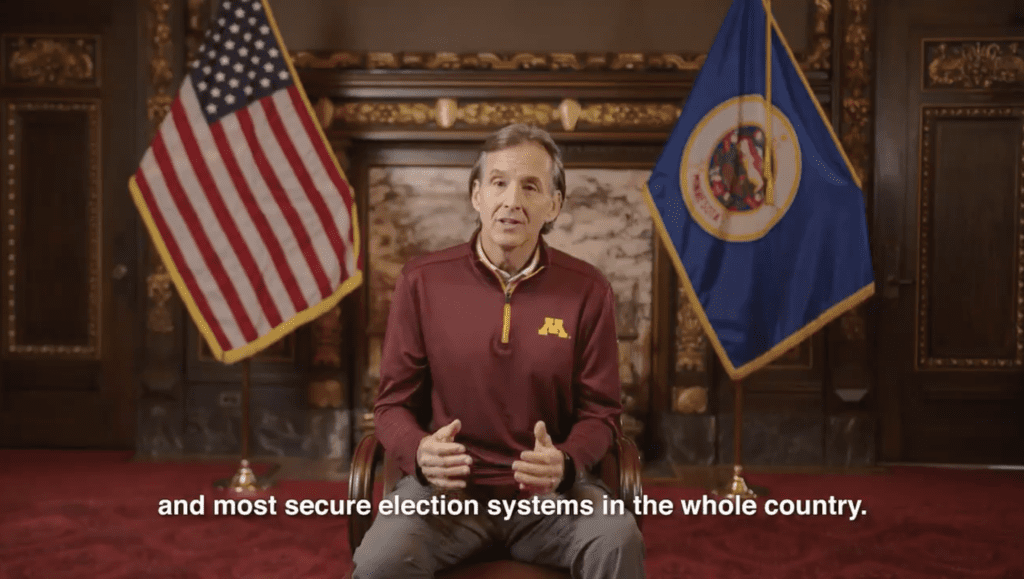 Minnesota Governor’s Office/X
Minnesota Governor’s Office/X
2. Remind voters that elections in your state are free and fair because of dedicated citizens—our neighbors and friends. Nonpartisan election officials and poll workers make our elections possible. Celebrate them. Tell their stories. People interact with the election system at the local level—and surveys show the local level is where voters have the most trust in elections.
Example: The Virginia Department of Elections produced this 60-second video spotlighting election officials from across the state and explaining how their dedication keeps Virginia elections free, fair, and secure. The ad links the values of democracy to the values of the state.
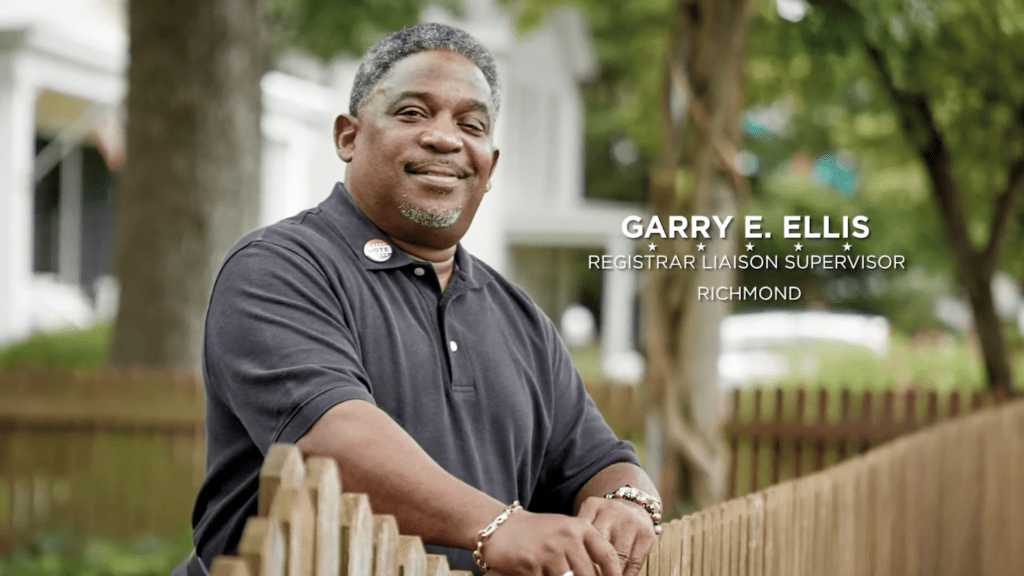 Virginia Department of Elections/YouTube
Virginia Department of Elections/YouTube
Example: Michigan Gov. Gretchen Whitmer delivered doughnuts to election workers accepting early ballots for Michigan’s presidential primary. She used the media opportunity to thank election workers and to promote the state’s new early voting law. She invited media to cover this event and also posted about it on Instagram: “Today, I visited the REO elections office in Lansing to deliver some coffee and donuts to thank election workers [for] their efforts in supporting early voting. Making your voice heard is essential in our democracy, and it wouldn’t be possible without these dedicated public servants.”
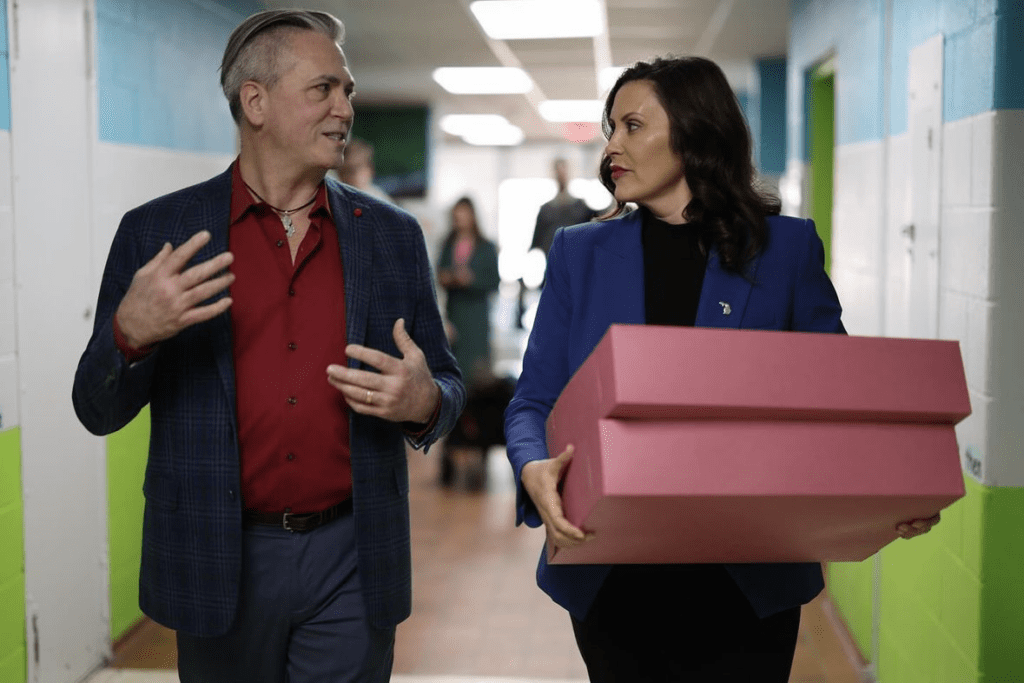 Michigan Governor’s Office/Instagram
Michigan Governor’s Office/Instagram
Example: Kentucky Secretary of State Michael Adams announced a contest for the state’s schoolchildren to design the “I Voted” sticker. The vote will take place at the Kentucky State Fair, and the winning design will appear in November at polling places all over Kentucky.
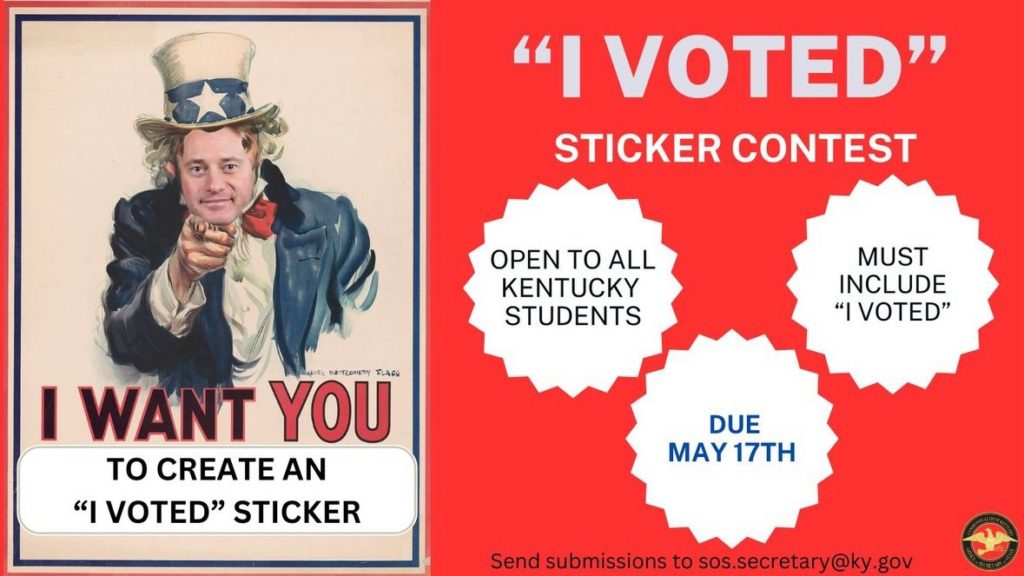 Kentucky Secretary of State’s Office/Instagram
Kentucky Secretary of State’s Office/Instagram
3. Enlist trusted bipartisan figures in your state to promote free and fair elections and educate voters on the election process. This can and should include leaders in education, faith, business, and sports, to stress that elections are free, fair, and secure and to educate voters on the election process.
Example: In Michigan, Secretary of State Jocelyn Benson brought business leaders together in a partnership to inform and engage voters in 2024. The partnership, including the NFL’s Detroit Lions and the NBA’s Detroit Pistons, encouraged businesses to promote accurate, nonpartisan election information and help their employees get involved as poll workers.
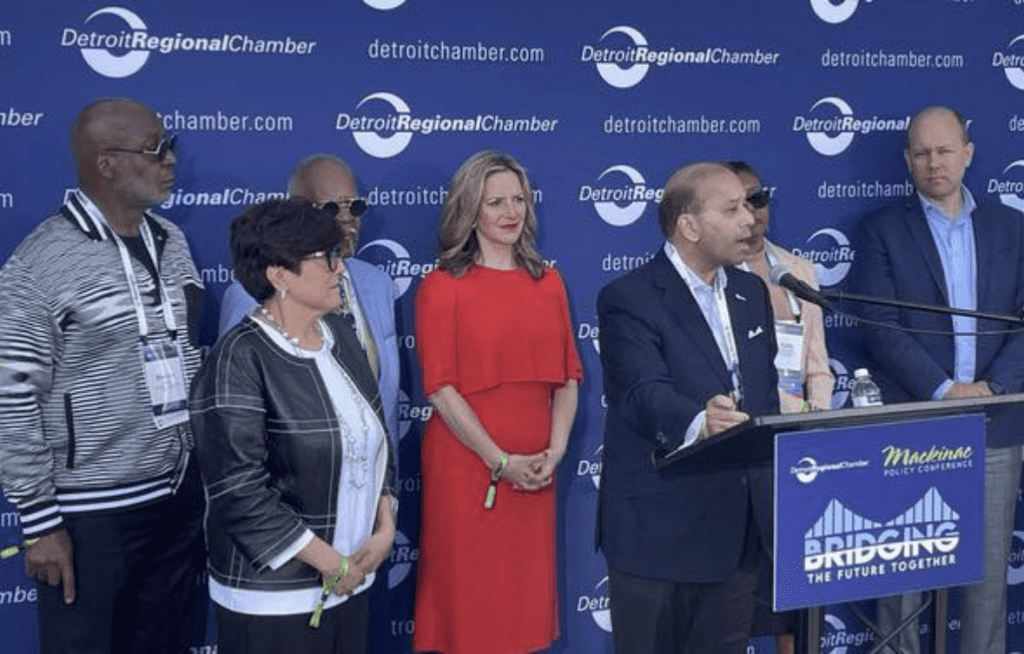 Michigan Secretary of State’s Office/Instagram
Michigan Secretary of State’s Office/Instagram
4. Be out front. In the months, weeks, and days before the election, give regular updates on the preparations for voting and counting. Establish your office as the source for trusted information about the election.
Example: More than a week before the 2024 primary in Pennsylvania, Secretary of the Commonwealth Al Schmidt began daily livestream appearances to update and educate voters. “The more Pennsylvanians understand about all the work that goes into safeguarding our elections, the more confident they can feel in the process,” he said.
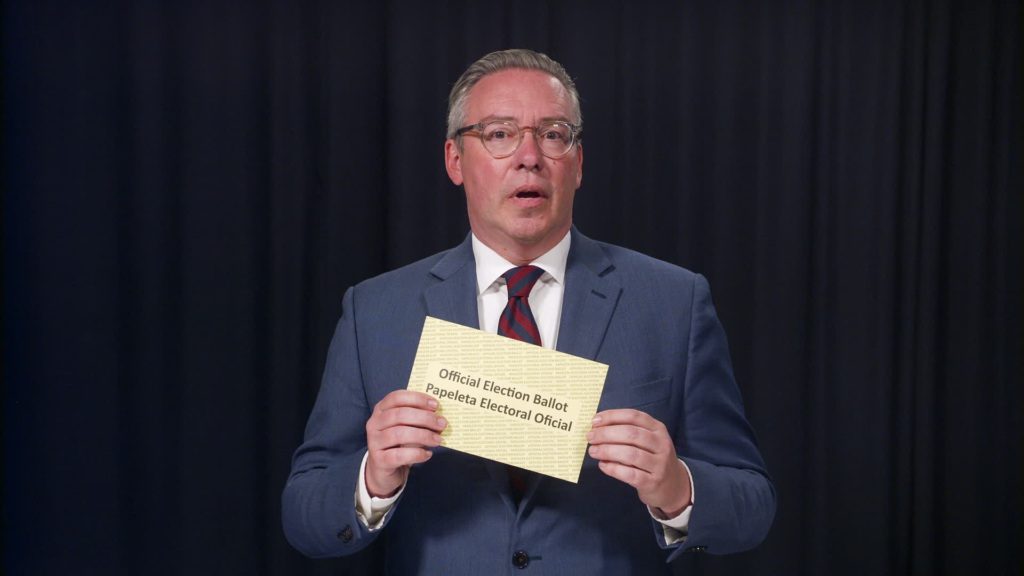 Pennsylvania Department of State
Pennsylvania Department of State
Example: Nevada Secretary of State Cisco Aguilar committed to releasing quarterly reports on election investigations to increase transparency about Nevada’s safe and secure elections. The first edition showed how rare voter fraud cases really are: In the 2020 and 2022 elections, the office referred a total of just 14 cases to the attorney general or other agencies for possible prosecution. (For context, more than 1 million people voted in Nevada in the 2022 general election alone.)
Promoting Election Security
1. Before the election, explain the steps you’re taking to keep the election secure.
Example: Ahead of early voting in Minnesota’s presidential primary in 2024, Secretary of State Steve Simon held a press conference to explain the systems that keep elections in his state secure. As the AP reported, Simon walked through steps including “new election security laws, multiple layers of security for voting from home, public testing of the accuracy of voting machines, and a large corps of volunteer election judges from the major parties.” Simon was joined at the press conference by Bill Ekblad, his election security chief.
2. Emphasize that your state has processes and systems in place to handle things that may come up during election season. Make clear that there will be consequences for any misconduct that attempts to compromise the security or the safety of the upcoming election. Voters have sincere questions and concerns about election security and voter fraud. Build confidence by demonstrating that the system works, and by putting any concerns into context.
Example: Nevada Attorney General Aaron Ford and Secretary of State Cisco Aguilar held a press conference. They stressed that the 2024 election in Nevada will be free, fair, and secure. They also took on “voter fraud.” They didn’t dismiss it as a fantasy but did make these key points: Our system works. When voter fraud does happen, we shut it down and prosecute. It’s also extremely rare in Nevada.
 KTNV-TV
KTNV-TV
3. Explain the key security and accuracy features of election systems in simple terms, without jargon. Key features include certification of voting systems, lack of connection to the internet, use of paper ballots or voter verified audit trail, physical security measures, chain of custody procedures, and audit processes. Specificity breeds confidence. Rather than just broadly asserting that elections are secure, help voters understand all the steps that keep them secure.
Example: Thurston County, Washington, posted this clear fact sheet explaining the security of drop boxes (including that they’re harder to damage than an SUV). It was paired with this video explaining what happens to a mail ballot, including details about signature matching, chain of custody, and tamper-proofing steps.
 Thurston County Auditor’s Office/YouTube
Thurston County Auditor’s Office/YouTube
4. Promote opportunities in a variety of mediums—including on social media—to view logic and accuracy testing and other security processes. Encourage tours of election facilities, for both reporters and the public. Encourage local media to cover the procedures your team has in place to ensure voting systems are accurate and secure.
Example: In Muskegon County, Michigan, election officials invited local reporters to watch a test of tabulating equipment ahead of the presidential primary. The officials explained that the test even includes running improperly marked ballots through the system to make sure the tabulator will catch them and not count them.
Example: After a successful presidential primary in Arizona, Maricopa County Recorder Stephen Richer took part in a live interview from inside an election facility. He praised the public for being part of a successful process. He explained that his team’s next focus would be on securing voting locations for the next two elections later in the year, as well as on making sure the voter rolls are as accurate as possible.
Promoting Election Safety
1. Stress that it’s safe to vote.
2. Make clear that election officials have been working with law enforcement leaders for months to make sure voters, and the election process, are safe.
Example: In July 2022, well before Arizona’s midterm election, Maricopa County Sheriff Paul Penzone and Recorder Stephen Richer appeared together to detail steps to protect public safety and the election process. Penzone said democracy is “something that we pride ourselves on—which is being a nation that your vote is your voice and that everyone who can lawfully vote will be able to do so without any form of intimidation.”
 FOX 10 Phoenix/YouTube
FOX 10 Phoenix/YouTube
3. Communicate that voter intimidation will not be tolerated.
Example: Ahead of the 2020 election, Philadelphia District Attorney Larry Krasner held a press conference to say his office was ready to investigate and prosecute any cases of voter intimidation. “Anyone who comes to the cradle of American Democracy to suppress the vote, and violates the law and commits crimes, is going to find themselves in a jail cell talking to a Philadelphia jury,” he said.
Example: Ahead of the 2022 election, Colorado Attorney General Phil Weiser issued public advisories reminding voters that it was against the law to intimidate voters or interfere with election officials. Coloradans, he said, are guaranteed the right to “vote safely and securely without feeling threatened or pressured.”
4. Be careful about the images you post and the messages you deliver. Some voters may see images of uniformed law enforcement at a polling place and associate that with historical voter suppression.
Promoting Truth in Elections and Combatting Disinformation
1. Prepare voters for what to expect. Before any problems arise, explain to voters that they may encounter disinformation, meant to confuse them and damage their trust in the process. Make voters feel empowered.
Example: Ahead of the 2024 elections, New Mexico Secretary of State Maggie Toulouse Oliver launched a statewide ad campaign to warn voters about AI-powered misinformation. The campaign included details that help identify videos as deepfakes, such as slurred words and incorrect pronunciations. Oliver recommended that voters get their election information only “from trusted sources—like their county clerk or the Secretary of State’s Office—while remaining skeptical of material from unknown entities.” The campaign’s tag line: “When in doubt, check it out.”
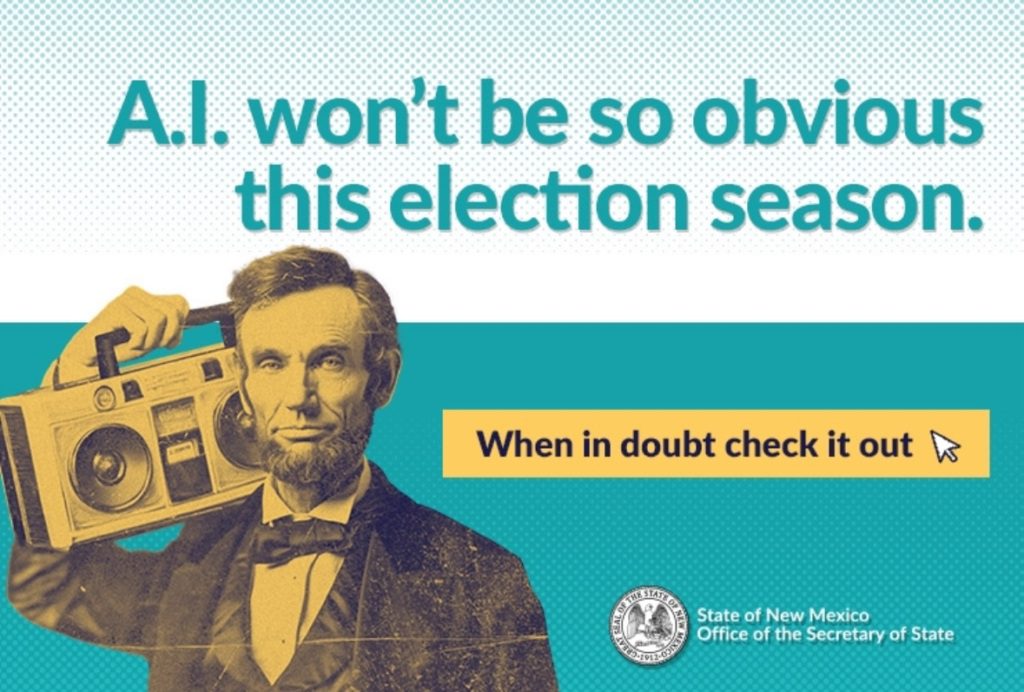 New Mexico Secretary of State’s Office/Instagram
New Mexico Secretary of State’s Office/Instagram
2. When you spot a significant attempt to confuse or intimidate voters, call it out. Identify it as disinformation. Show that you’re working with appropriate authorities to prosecute it under the law. Make clear that your office will use all laws at your disposal to protect voters from scams and keep your state’s elections free, fair, and secure.
Example: In January 2024, New Hampshire Gov. Chris Sununu demonstrated these steps after a robocall impersonating President Biden tried to discourage Democrats from voting:
 New Hampshire Governor’s Office/X
New Hampshire Governor’s Office/X
3. Make it easy for voters to find truthful election information. Especially in election years, voters will have sincere questions about the process. Help them find the answers by posting explainers that use clear and simple language.
Example: Maricopa County, Arizona’s Just the Facts site gives voters a wealth of information about registration, the voting process, counting and certification, and security. It also answers questions that voters commonly have.
4. Use caution when responding to disinformation. Don’t amplify false claims. If a narrative becomes far-reaching and has a high impact on voters or elections in your state, you may feel you need to respond. Generally, it’s best not to repost, reply to, share, or screenshot disinformation narratives regardless of their source. Doing so only amplifies the narrative to a larger audience.
If you do choose to respond, make sure any response:
- amplifies the accurate, correct information you are seeking to share;
- directs voters to a trusted source;
- minimizes further engagement with the original post or disinformation;
- focuses on reducing the traction around the false claims and source.
You may also consider using the “truth sandwich” technique:
- First, share the facts about a specific issue.
- Second, explain/refer to the issue and that it stems from a lie or misinformation.
- Third, repeat the facts. (You may also use this step to direct people to additional trustworthy information.)
Example: Michigan’s Department of State uses the “truth sandwich” to address questions about the state’s voter rolls:

Michigan Department of State
- Telling Our Story: An Elections Communications Guide (The Elections Group)
- Enhancing Election Security Through Public Communications (U.S. Cybersecurity and Infrastructure Security Agency, U.S. Election Assistance Commission)
- Tracking Attitudes About Elections and Political Violence Over Time (States United)
- Americans’ Views on Political Violence – Key Findings and Recommendations (States United)
- Artificial Intelligence and the 2024 Election: Suggestions for Election Officials (States United)
- Across the Political Spectrum, Americans Prioritize Counting Every Legal Vote Over Winning (States United)
- Public Safety & Elections: A Guide for Law Enforcement (National Policing Institute, States United, 21st Century Policing Solutions)
- How Elections Work in Arizona (States United)
- How Elections Work in Michigan (States United)
- How Elections Work in Nevada (States United)
- How Elections Work in Pennsylvania (States United)
- How Elections Work in Wisconsin (States United)